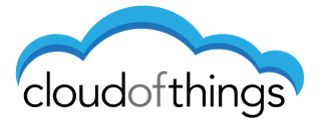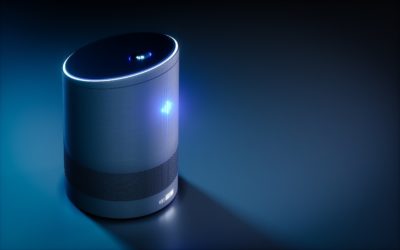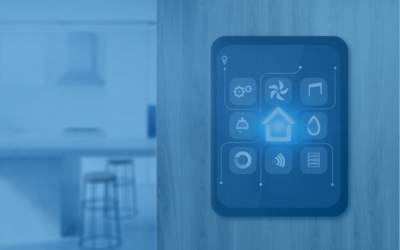As Alternative Energy Sources Rapidly Emerge New Connected Field Service Solutions Using IoT Are Paramount
11
August 2020
by David Chourqui – EVP of Business Development
In the past few years, utilities have been at the forefront of the IoT revolution, with smart metering leading the way. Cloud of Things is proud to be part of several projects, contributing to smart metering solutions that leverage our DeviceTone IoT suite.
According to a recent report by the analyst firm ABI Research, in 2018, there was a base of 700 million smart meters installed, and by 2023, this install base will double to reach 1.34 billion meters. Other industry analysts and observers agree that the benefits of connected meters – for natural gas, electricity, solar, wind, and other sustainable alternative sources of energy – achieve almost immediate ROIs.
Smart meters capture actionable data in real-time. Historically, traditional utility operations are laborious and require in-person measurements and actions by field personnel. The cost of people and human error has proven to be extremely risky, and by implementing IoT-sensors to manage the meters and data collected from them directly, companies are able to lower costs and improve service – including field service through greater automation, control systems, and more.
The U.S. Department of Energy estimates that nearly 70 million American homes are already using a smart meter, and electric utility companies have enthusiastically replaced analog meters (which are read each month manually) whenever possible. Other countries, including Israel, have been leaders in this domain for decades. The strategic potential of collecting a broad spectrum of information about electricity consumption is well known and includes the value of accurate real-time measurements and the elimination of monthly estimates and meter-reading home visits.
A great concern regarding smart meters is access to personal and private information and worries about cyberattacks on smart meter deployments, and as we address these challenges, which we have done in the “DNA” of our DeviceTone IoT suite, we are accelerating adoption by diminishing risk.
Do the natural advantages of connected, smart meters outweigh the risks? Let us take a look at both sides.
Advantages for Consumers
- More detailed, real-time feedback regarding energy use
- Ability to adjust habits to lower electricity bills
- Reduction in the number of blackouts and system-wide electricity failures
Advantages for Power Companies
- Eliminates manual monthly meter readings
- Reduces cost of compared to traditional field service
- Encourages more efficient use of power resources
- Provides responsive data for balancing electric loads while reducing blackouts
- Enables dynamic pricing
- Avoids the capital expense of building new power plants
- Helps to optimize profit
While there are challenges, which we have been addressing, the advantages do outweigh the disadvantages as demand for energy grows. Energy markets become more competitive and more regulated, energy-intensive data storage and processing places new demands on systems, and new generations of consumers not only expect data and control at their fingertips through a mobile app, for example, but demand it.
The keys to success are simplicity – security – and scale. Cloud of Things is winning by making it exponentially easier for product companies to add connectivity to their offerings (for example, embedding IoT capabilities securely and affordably into meters). The complexity of metering in the past has been reduced, with full-stack solutions coming out of the IoT ecosystem, where companies like ours are partnering with communications service providers to deliver end-to-end, ready-to-run capabilities which make our clients more competitive and profitable. Contact us, and we will quickly demonstrate what we have done and share our roadmap for even more powerful CFS solutions going forward.
Similar Blogs
Cloud of Things joins the Tondo-Smart group, a leading public smart-city vendor
Ultra-Low Energy (ULE), an extension of the Digital Enhanced Cordless Telecommunications (DECT) physical layer specification that supports low power devices, is becoming an increasingly popular approach, promoted by the ULE Alliance as “a way to provide sensors, actuators and other smart devices in the Internet of Things (IoT) with two-way transmission capability over a dedicated frequency band of 1900MHz.”
DSP Group and Cloud of Things Combine Forces and Introduce a Fully Managed ULE IoT Cloud Services Gateway
Ultra-Low Energy (ULE), an extension of the Digital Enhanced Cordless Telecommunications (DECT) physical layer specification that supports low power devices, is becoming an increasingly popular approach, promoted by the ULE Alliance as “a way to provide sensors, actuators and other smart devices in the Internet of Things (IoT) with two-way transmission capability over a dedicated frequency band of 1900MHz.”
As Smart Home Solution Adoption Explodes, Service Providers Seek Simplicity and Scale
The collapse of the housing market in North America in 2008, driven in large part by the near-collapse of the economy, is now in the rearview mirror. The market today is healthy and evolving, responding to the impact of COVID-19 in America’s largest cities, which is driving up the prices of luxury homes in the suburbs and more affordable housing for those looking to leave small, cramped apartments and work remotely from larger, affordable apartments as remote working becomes more acceptable to certain businesses.


